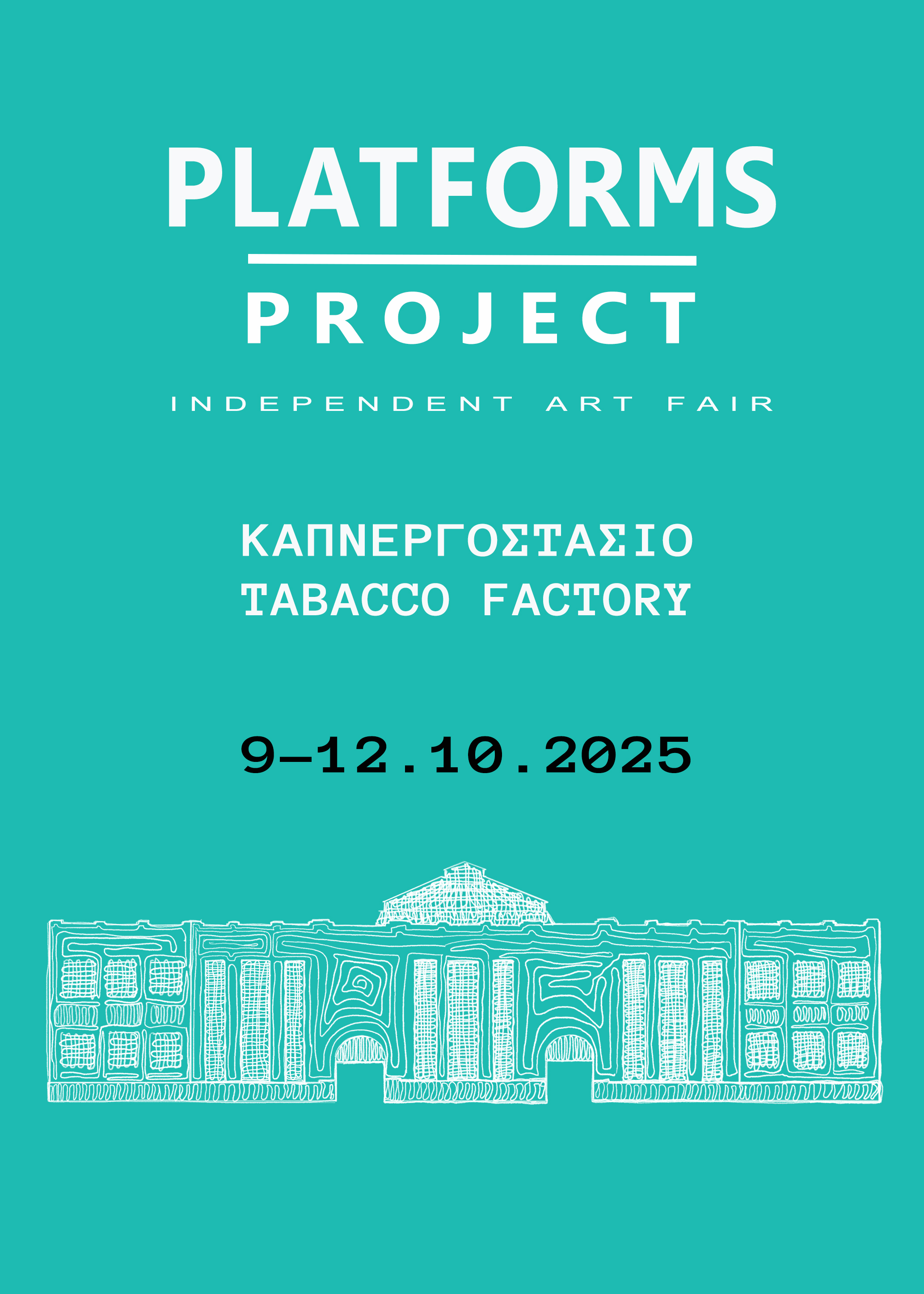Commenting on locality, Lucia Bricco’s three-act performance, “The morning, the morning, the morning” for Sub Rosa Space’s participation at Platforms Project 2019, culminates the general concern for sustainability and lack of responsibility. Her performance was divided into three pieces, starting on the second day of Platforms Project, Friday 17 May 2019, and ending on Sunday 19 May 2019. The set consisted of the entire booth being painted in an Aegean sky blue including a chair and tents as part of the installation. There was an amphora and a huge sketch of the Athenian neighbourhood of Kypseli drawn on a transparent material and hanging from the wall at some distance from it. All three parts had a duration of 15-30 minutes, starting at 20:00.
On the first day of her performance, the artist was awkwardly moving behind the transparent sheet and simultaneously had soil falling out of her pants. Inside the tent you could notice another person, with only their feet being visible. Later on, the performer covered herself in dirt and lay under the sheer picture of the city. She then sat on the chair and had a coffee. On the second day, she tried to clean up the booth from the dirt of the first day, and just like a mother cradled in her arms a cloth containing something, like an infant. The performer then let the cloth to the ground only to reveal that inside it were not an infant or a doll, but toy trucks, bulldozers and tractors. She collected every toy, and started wrapping them around her face. At this point we noticed that on the tent there are eyes slowly being torn out while a bigger toy truck is going her way out from inside the tent. She noticed it and tried to stand against it, while later she sat on the chair, facing the tent and had coffee again. She then spilled her coffee. On the third and final day, the performer walked in with an alien, carrying a tree with them. They hit the tree on the ground many times, only to destroy it. They then placed the tree on the floor, and then the performer sat down on the chair watching the tree, while the alien sat in the audience watching the performer. The performer then had a coffee.
Art, life, experience and meaning come together through Bricco's performance and the image she tries to show through each piece. For this particular work, the first day is just a day, and tomorrow there will be another day, and a day after that one. Each action initiated in each new day was changing the installation and the image, thus with each morning, there would be a different outcome. In the same respect,the title “The morning, the morning, the morning” can give some presence to the action and some closure.

Transmuted and redefined, Bricco questions the personal volition one has in the efforts for sustainability. Playing a game of who’s who, she uses the city as her background to set down the questions she wants to ask. As the booth itself eagerly stood out from the rest at the fair by its saturation of blue, so did the performance with its disrupted narrative yet cohesive enigmatic execution. Hiding behind a transparent urbanism, the modern human uses the city environment as the stepping ground of everydayness. Futility though surpasses expectation, as what is left behind from such social steps is the dirt and soil used to cover up our tracks of urbanisation and evolvement. As the dirt falls out of the performer, the peaceful and unified blue is covered and disrupted.
In the same way, when taking the local on a grander scale, archetypes of hospitality, motherhood and culture place the protagonist, in this case Bricco, in the middle of a cultural oxymoron. In retrospect, the performer changed her mind about using the mother symbol in her work and isolating the work within a gender commentary. That said, her link to maternity was there to showcase the responsibility a mother has to her child and the gravity such a dynamic has in relation to urbanity. In other words, what was raised was the question of nurture: a nurturing of culture and of humanity, which is placed in a concrete environment made to improve one’s life and create a habitus. The tent we shelter ourselves, which in this case has eyes and looks back at the performer as she sits on a chair, tied to a techno-socialisation that constantly crawls closer and closer with its bulldozer.
After the performances were over and the performer left, people still gathered at the booth. Scattered with pieces, its blue is spoiled, and yet it stands out confused and ready to fulfill the archetype of beauty and culture. Children play with the toys and people look at it confused, wondering what had happened here the day before. Bricco with her graphic and clear execution succeeds in providing an image that culminates the abstract nature of intention with a stable sense of responsibility. Her vision was clear and simple, yet deep enough to be analyzed through a variety of perspectives. The tree used to root one’s intentions proved to be nothing but futile actions, as it could not have been rooted to the now. As she tries to root the tree back to the ground, attempt after attempt, hit after hit, the tree breaks and sheds the power which was spent in the effort. After all things can wait until after the coffee. We can try again in the morning, in the morning, in the morning.
Update 21 June 2019: This article has been edited to reflect a more accurate statement from the artist about her use of drawing in the work and the choice of the colour blue in her installation.
Update 19 August 2019: The article has been further edited to remove all quotes, at the artist's request.







